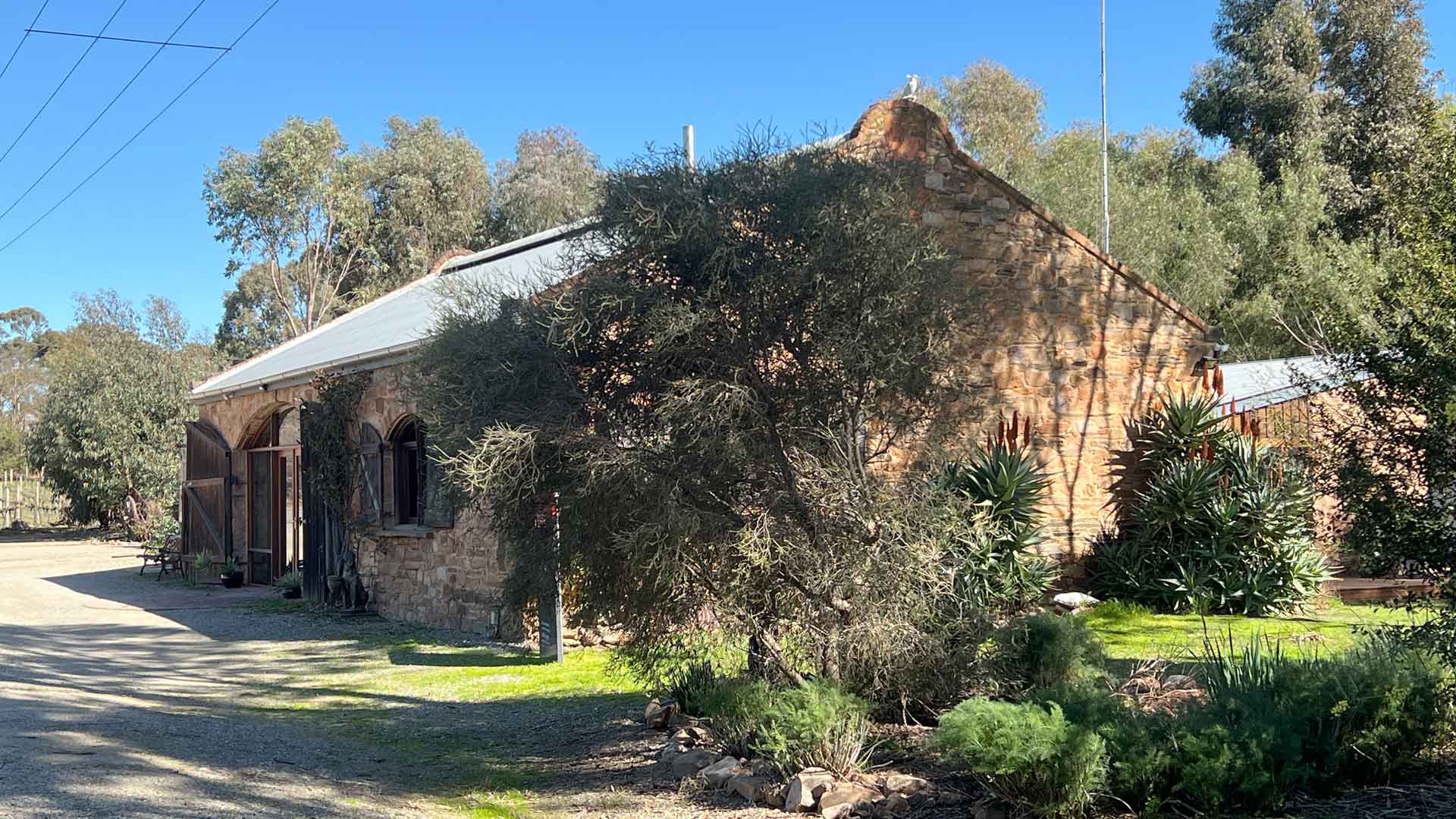After the opening of the Railway Line to Gawler in 1857, the resultant change of route for the ore delivery by bullock wagon from Burra then bypassed Mintaro. The district entered a further phase of agricultural development and the blacksmith became a vital part of the facilities of the town.
William Rowe was one of the two blacksmiths working in Mintaro during the 1860s (the other was Frederick Leighton). Rowe purchased Lot 17 and the northern half of Lot 44 from Joseph Loader (a labourer) in 1858 and the southern half of Lot 44 from Levi Parker (a shoemaker) in 1860. The blacksmith’s shop was built on the northern section of Lot 44 facing the Burra Road some time between 1858 and 1861. By 1861 Rowe was mentioned in the Register Report…
“At a ploughing match in Auburn Mr. Rowe, an active competitor received the following prizes: best colonial made plough, best colonial made harrow, best plough on the grounds. The judges said this plough was not only unrivalled but unequalled by any which had come under their notice. Also at a Clare ploughing match the prize winner used a plough made by Mr. Rowe of Mintaro.”
William Rowe continued as blacksmith in Mintaro until the 1890s. It is possible that he hired other men to assist him at times; and in the 1888 Directory there were 6 blacksmiths working in Mintaro.
Rowe died in 1906 and his widow Jane sold the property to Mary Hunt, wife of Mintaro builder John Hunt. The building was no longer used as a blacksmith’s shop and has had various uses since then. For some time it was a mechanics workshop and then after 1955 became an agricultural storage shed. Some time during the early 1960s the main door was enlarged and the attractive arched opening and adjacent window were lost.
This simple stone building with red brick coping is in poor condition. The ridge register to the roof has deteriorated with sections missing. The walls are still in sound condition but the building will deteriorate dramatically if maintenance and restoration works are not undertaken soon. The rear stone wall enclosure was probably a stable or holding area for horses. The walls to this area are in poor condition and deteriorating fast. There is a fine slate rain water tank attached to the side elevation.[1]
The course of the Blacksmith Shop changed yet again in 1991 when Denise Klemm fell in love with this captivating old ruin.
She expressed, “It is my deepest passion to breathe life back into a sleeping historical giant … to rekindle the energy, the hustle and bustle, the activity and creativity of old which once was driven by the sheer grit and determination of our pioneers … it is my wish to provide a place that ‘tweaks’ people’s zest for life, stops them in their tracks for a short moment to be lost in the ‘wonder of old’ – the skills, the sounds, the smells, the crafts, the memorabilia and historical story – just for the fun of living! At this point in time we are in danger of losing all of this.”
She progressively achieved just this over a 20 year period and today it is a magnificent marriage of ‘old’ with ‘new’, now encompassing many functions; residence, B&B, seminar venue, live-in retreats and central to community events.
The process began in 1998 with the reinstallation of the massive arched timber doors. The original keystone and cut stones were rescued from a creek bed 10 miles to the east of Mintaro. All can be seen today reinstated in their glory at the Blacksmith Shop entrance.
The original 9 metre rough-sawn Oregon trusses were levelled and retained. The ‘lost’ loft was enlarged and a mezzanine bedroom and ensuite installed allowing grand views down into the now slate-floored Blacksmith living area.
The Blacksmith’s substantial Redgum bench today features as the kitchen island cupboard. Mintaro Slate Quarries fashioned the bull-nosed kitchen bench tops from slate – 900 million years old!!
The Butcher and Cobbler’s spaces are today a luxury bathroom and bedroom/study. The 13 metre long, 4 metre high slate and stone back wall was painstakingly ‘stood up straight’ from a dangerous lean, now repointed and stabilised to endure many more years.[2]

